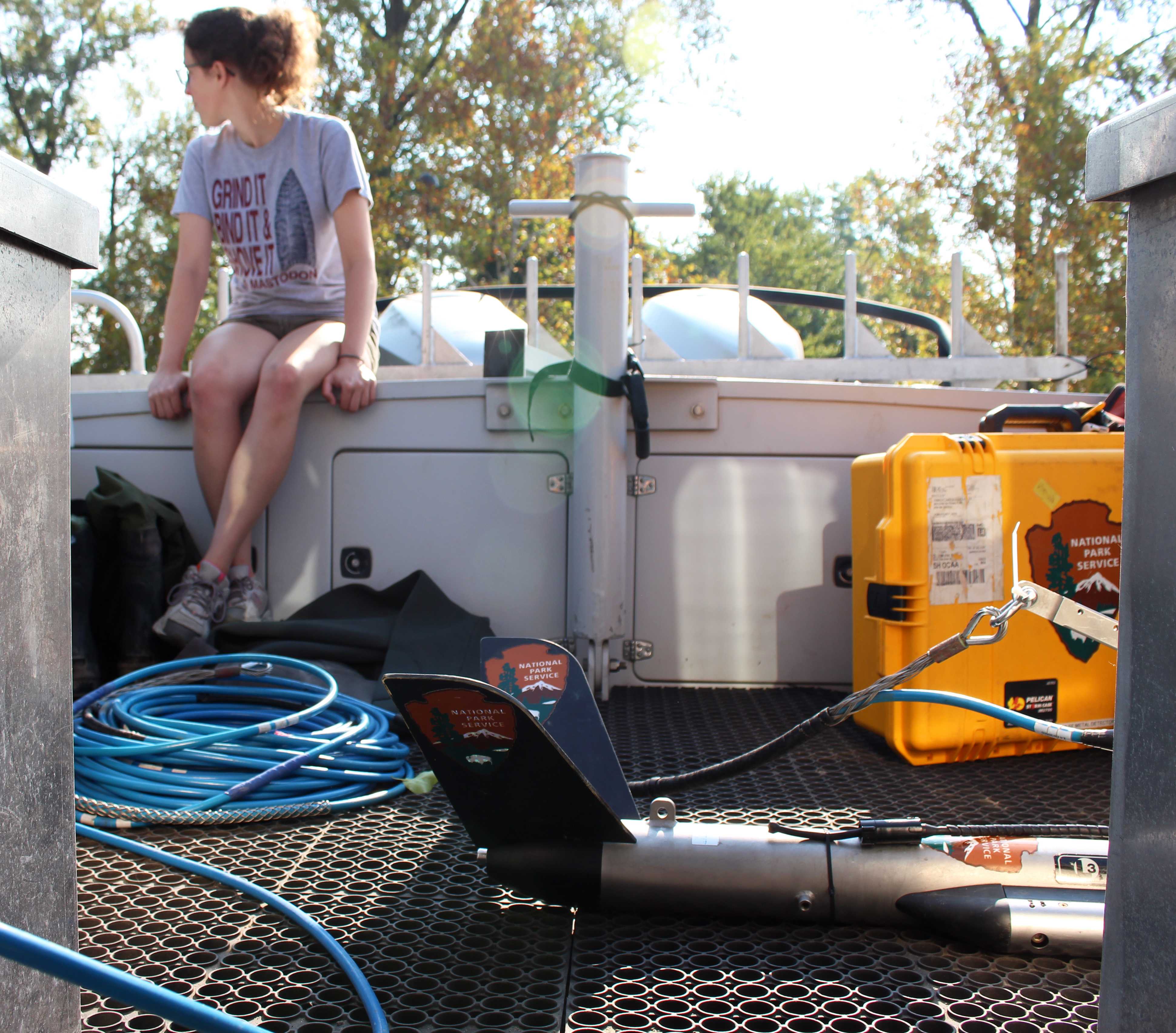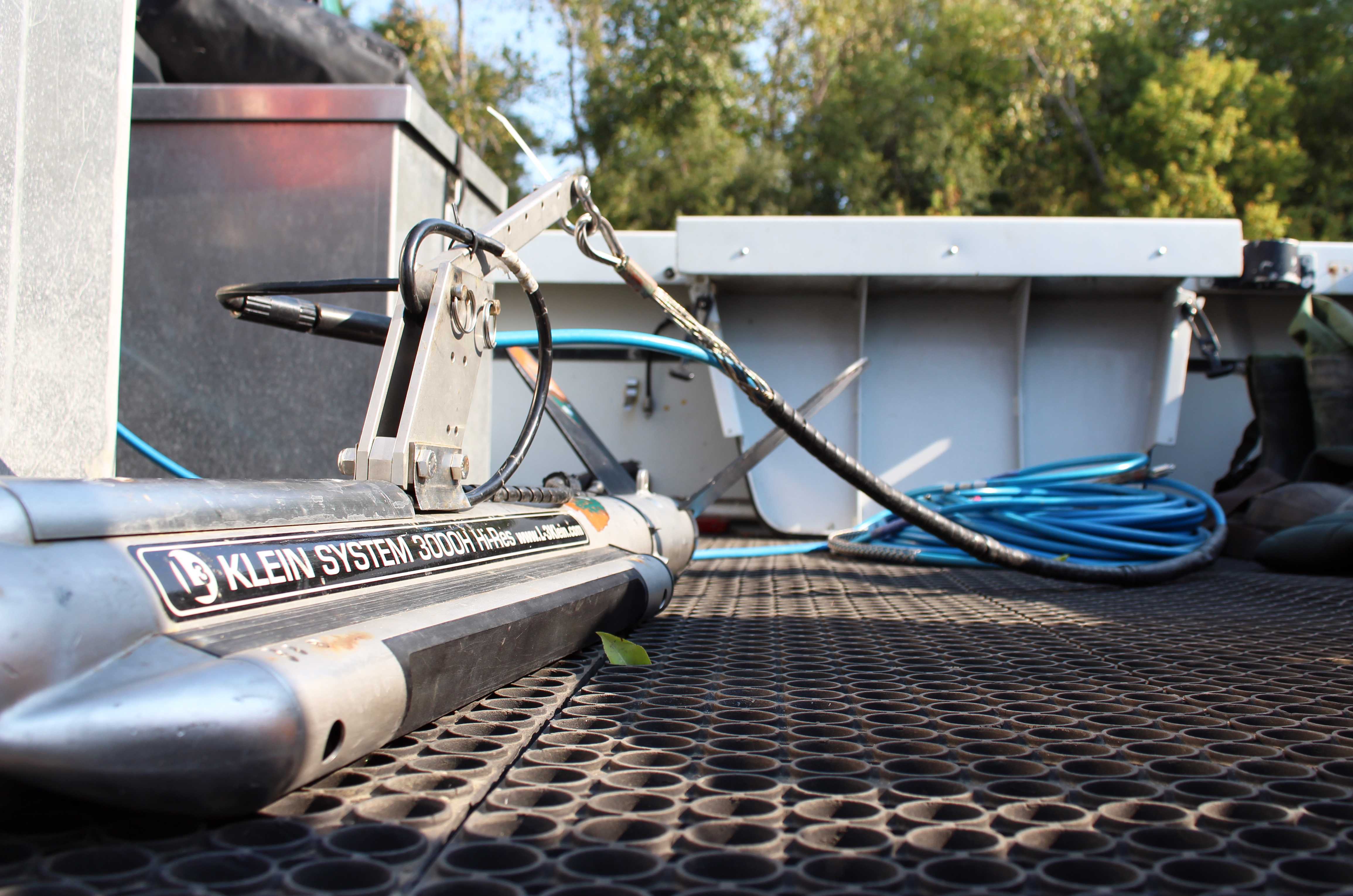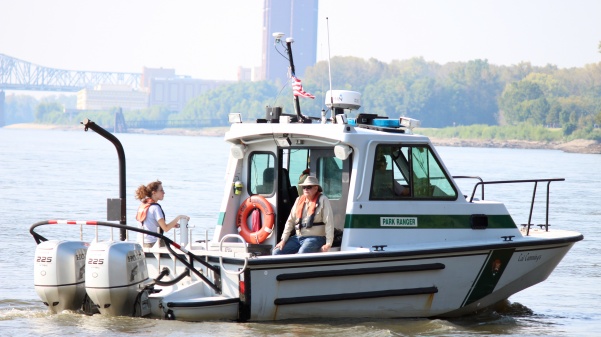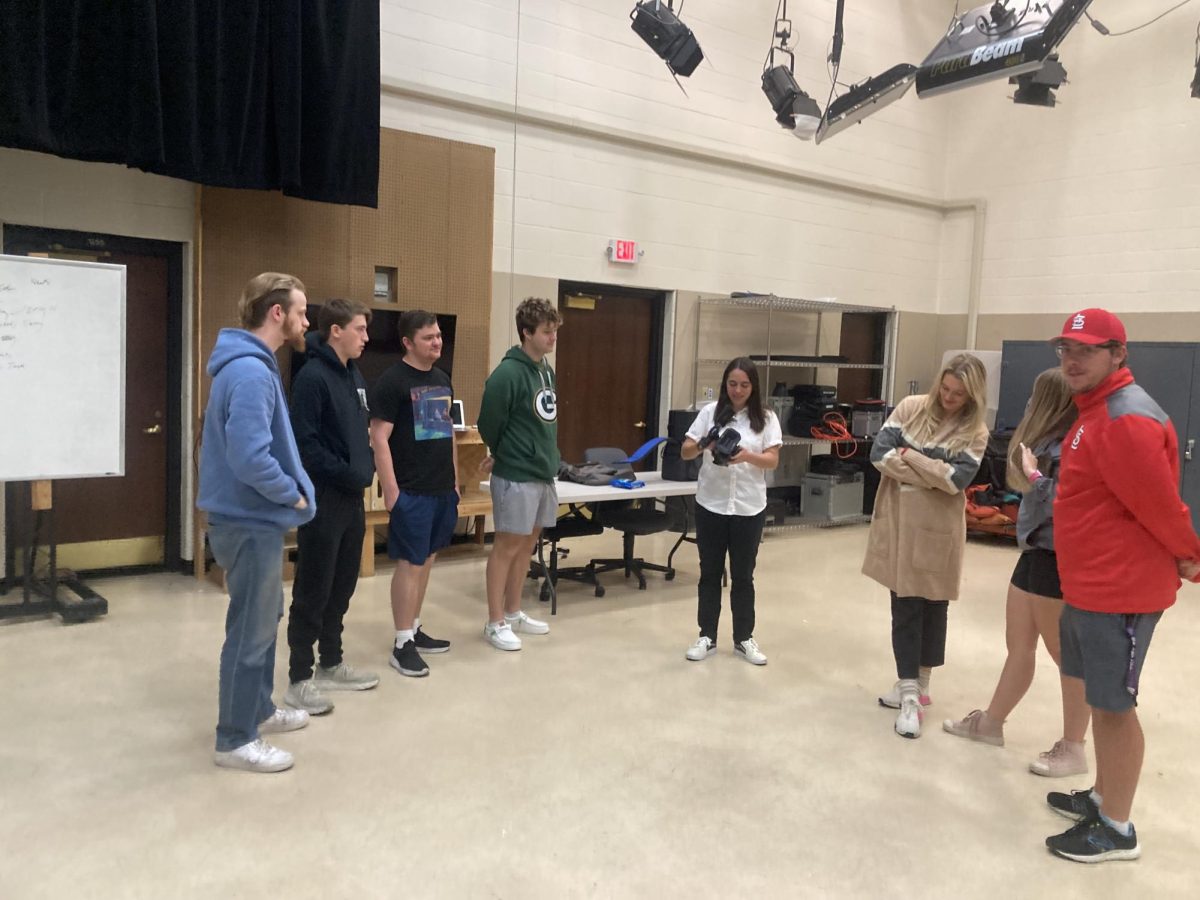MATT HAMPTON | Reporter
Lindenwood anthropology students searched the Missouri River near St. Charles this weekend for the wreck of a steamboat that transported survivors of the Battle of the Little Bighorn in 1876.
The river survey was funded by a grant from the Missouri Humanities Council, which also covered a related series of lectures in Dunseth Auditorium on Thursday, Friday and Sunday.

Photo by Kyle Rainey
The group worked in cooperation with the National Park Service Submerged Resources Center to survey a section of river about five miles upstream of St. Charles, where the Far West is believed to have sunk in 1883.
They met to conduct a preliminary survey Friday morning and again Saturday for the main expedition. Only three students were able to come each day because of limited space on the boat, said archaeology program director Steve Dasovich.
Friday, the team used side-scan sonar to attempt to locate the Far West, but failed to do so, being hindered by low water levels. Dasovich, who worked as a professional underwater archaeologist during the 1990s, said the high-tech geophysical equipment the NPS used requires at least two feet of water. If the wreck was in shallower water, he said it would be unlikely to be visible from the surface, either.
“I think she’s going to be pretty well-buried,” he said before the survey.
Further obstacles to finding the shipwreck came from the fact that its exact location is unknown.
“We don’t know if the wreck is where we think it is; that’s what we’re going to go find out,” Dasovich said.
He explained that because of its speed, size and power, the Missouri is one of the most dynamic and active rivers in the country and shifts frequently over time.

Photo by Kyle Rainey
“You can have a sandbar appear overnight, and the next night it’s gone,” he said.
Its erratic nature combined with its murky water caused the Missouri River to be notoriously dangerous for ships.
The steamboat known as the Far West was built in 1870 and served as a mountain packet boat and provided military transport on the upper Missouri River, most famously during the Battle of the Little Bighorn, which ended in the defeat and death of Lt. Col. George Armstrong Custer.
Little Bighorn was part of the Sioux Campaign, an 1876 attempt by the United States to force Lakota and Cheyenne Native Americans in modern-day Montana back onto their reservations in the Dakota Territory, according to Battle of the Little Bighorn historian Doug Scott.
In the saloon of the Far West, Custer was given the orders for the mission which would result in Little Bighorn. [perfectpullquote align=”right” cite=”Steve Dasovich” link=”” color=”” class=”” size=””]”We have a cool opportunity for our students to do something they’ll probably never get to do in their lives.”[/perfectpullquote]The Native Americans disastrously defeated Custer in the battle, killing him along with hundreds of other men. Fifty wounded soldiers and one horse named Comanche were brought from the battlefield to the Far West, which transported them, along with news of Custer’s Last Stand, to Fort Abraham Lincoln, near Bismarck, North Dakota.
After the battle, the Far West was used to carry cargo and passengers until it sank near St. Charles in 1883. The crash resulted in no deaths, and the upper portion of the steamboat was salvaged and sold.
Dasovich said that the survey provided an opportunity to become exposed to a unique field of archaeology.
“We have a cool opportunity for our students to do something they’ll probably never get to do in their lives,” he said.
One of those students is Sadie Dasovich, his daughter and a senior archaeology student.

Photo by Matt Hampton
On Wednesday, she said she didn’t expect the survey to be particularly eventful but hoped it would be a useful experience.
“I think some of the people we will be working with will be good for jobs or letters of recommendation later,” she said.
The first presentation funded by the grant was given by Scott. At 7 p.m. on Thursday, he lectured about the battle and the history of the Far West.
Scott said his archaeological research on the battlefield near Hardin, Montana, involved him analyzing hundreds of bullets as well as other artifacts like weapons and pocket watches. From his research, he was able to determine native fighting positions and discovered that the Indian warriors used 47 different types of firearms in the battle. He concluded that Custer’s men were “outnumbered, outgunned and outfought” by the warriors, who used the terrain to obscure themselves.
Scott said that the story of Little Bighorn and the Far West is a “part of our heritage” with important meaning to the people it affected, and he hoped the project would contribute to the understanding of that story.
At 7 p.m on Friday, Dasovich spoke about “the role of the Missouri River in the steamboat trade and the resultant wrecks of steamboats left behind,” and at 8 p.m., Dave Conlin gave a presentation on the NPS Submerged Resources Center, which he heads. Sunday, Conlin will discuss the results of the survey.








